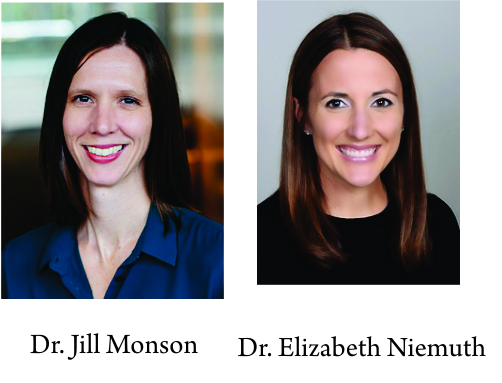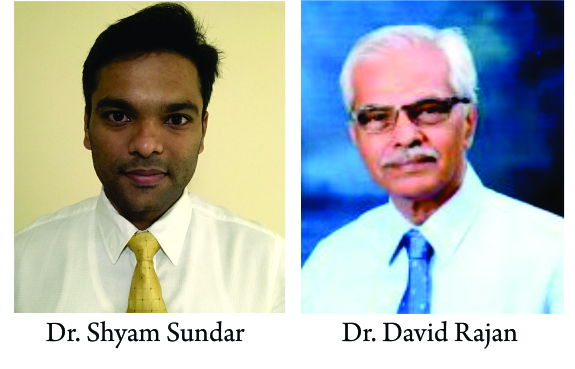Jill Monson, Elizabeth Niemuth
Volume 3 | Issue 1 | Jan – Apr 2018 | Page 36-41
Author: Jill Monson [1], Elizabeth Niemuth [2]
[1] Department of Physical Therapy, TRIA Woodbury, 155 Radio Drive, Woodbury, MN 55125, USA,
[2] Department of Physical Therapy, Institute for Athletic Medicine, M Health Clinics and Surgery Center, Minneapolis, MN 55455, USA
Address of Correspondence
Dr. Elizabeth Niemuth,
Institute for Athletic Medicine, M Health Clinics and Surgery Center, 909 Fulton Street SE, Minneapolis, MN 55455, USA.
Email: eniemut1@fairview.org
Abstract
The rehabilitation process after surgical intervention for patellar instability warrants special consideration of the anatomy, biomechanics, and surgical procedure to facilitate the best outcomes for the patient. There is a paucity of evidence-based literature regarding post-operative rehabilitation protocols for the patellofemoral (PF) compartment. Recommendations for early rehabilitation (0–6 weeks) after lateral retinacular lengthening, medial PF ligament reconstruction, tibial tubercle osteotomy, and trochleoplastyare reviewed in this article. For each procedure, the following common post-operative rehabilitation focus points are reviewed: Weight-bearing status and brace use, joint range of motion, and strengthening.
Keywords: Patellofemoral, Rehabilitation, Patellar instability.
References
1. Ward SR, Powers CM. The influence of patella alta on patellofemoral joint stress during normal and fast walking. ClinBiomech (Bristol, Avon) 2004;19:1040-7.
2. Powers CM. Patellar kinematics, part I: The influence of vastus muscle activity in subjects with and without patellofemoral pain. PhysTher 2000;80:956-64.
3. Kaya D, Citaker S, Kerimoglu U, Atay OA, Nyland J, Callaghan M, et al. Women with patellofemoral pain syndrome have quadriceps femoris volume and strength deficiency. Knee Surg Sports Traumatol Arthrosc 2011;19:242-7.
4. Grenholm A, Stensdotter AK, Häger-Ross C. Kinematic analyses during stair descent in young women with patellofemoral pain. Clin Biomech (Bristol, Avon) 2009;24:88-94.
5. HeinoBrechter J, Powers CM. Patellofemoral stress during walking in persons with and without patellofemoral pain. Med Sci Sports Exerc 2002;34:1582-93.
6. Brechter JH, Powers CM. Patellofemoral joint stress during stair ascent and descent in persons with and without patellofemoral pain. Gait Posture 2002;16:115-23.
7. Spencer JD, Hayes KC, Alexander IJ. Knee joint effusion and quadriceps reflex inhibition in man. Arch Phys Med Rehabil 1984;65:171-7.
8. Pietrosimone B, Lepley AS, Murray AM, Thomas AC, Bahhur NO, Schwartz TA, et al. Changes in voluntary quadriceps activation predict changes in muscle strength and gait biomechanics following knee joint effusion. Clin Biomech (Bristol, Avon) 2014;29:923-9.
9. Senavongse W, Farahmand F, Jones J, Andersen H, Bull AM, Amis AA, et al. Quantitative measurement of patellofemoral joint stability: Force-displacement behavior of the human patella in vitro. J Orthop Res 2003;21:780-6.
10. Amis AA. Current conceptson anatomy and biomechanics of patellar stability. Sports Med Arthrosc Rev 2007;15:48-56.
11. Desio SM, Burks RT, Bachus KN. Soft tissue restraints to lateral patellar translation in the human knee. Am J Sports Med 1998;26:59-65.
12. Conlan T, Garth WP Jr., Lemons JE. Evaluation of the medial soft-tissue restraints of the extensor mechanism of the knee. J Bone Joint Surg Am1993;75:682-93.
13. Hautamaa PV, Fithian DC, Kaufman KR, Daniel DM, Pohlmeyer AM. Medial soft tissue restraints in lateral patellar instability and repair. ClinOrthopRelat Res 1998;349:174-82.
14. Mountney J, Senavongse W, Amis AA, Thomas NP. Tensile strength of the medial patellofemoral ligament before and after repair or reconstruction. J Bone Joint Surg Br2005;87:36-40.
15. Duchman KR, DeVries NA, McCarthy MA, Kuiper JJ, Grosland NM, Bollier MJ, et al. Biomechanical evaluation of medial patellofemoral ligament reconstruction. Iowa Orthop J 2013;33:64-9.
16. Woo SL, Gomez MA, Sites TJ, Newton PO, Orlando CA, Akeson WH, et al. The biomechanical and morphological changes in the medial collateral ligament of the rabbit after immobilization and remobilization. J Bone Joint Surg Am 1987;69:1200-11.
17. Newton PO, Woo SL, Kitabayashi LR, Lyon RM, Anderson DR, Akeson WH, et al.Ultrastructural changes in knee ligaments following immobilization. Matrix 1990;10:314-9.
18. Smith TO, Russell N, Walker J. A systematic review investigating the early rehabilitation of patients following medial patellofemoral ligament reconstruction for patellar instability. Crit Rev PhysRehabil Med2007;19:79-95.
19. Doucette SA, Child DD. The effect of open and closed chain exercise and knee joint position on patellar tracking in lateral patellar compression syndrome. J Orthop Sports Phys Ther 1996;23:104-10.
20. Steinkamp LA, Dillingham MF, Markel MD, Hill JA, Kaufman KR. Biomechanical considerations in patellofemoral joint rehabilitation. Am J Sports Med 1993;21:438-44.
21. Powers CM, Ward SR, Fredericson M, Guillet M, Shellock FG. Patellofemoral kinematics during weight-bearing and non-weight-bearing knee extension in persons with lateral subluxation of the patella: A preliminary study. J Orthop Sports Phys Ther 2003;33:677-85.
22. Powers CM, Ho KY, Chen YJ, Souza RB, Farrokhi S. Patellofemoral joint stress during weight-bearing and non-weight-bearing quadriceps exercises. J Orthop Sports PhysTher 2014;44:320-7.
23. Escamilla RF, Zheng N, Macleod TD, Edwards WB, Imamura R, Hreljac A, et al. Patellofemoral joint force and stress during the wall squat and one-leg squat. Med Sci Sports Exerc 2009;41:879-88.
24. Lee TQ, Morris G, Csintalan RP. The influence of tibial and femoral rotation on patellofemoral contact area and pressure. J Orthop Sports Phys Ther 2003;33:686-93.
25. Huberti HH, Hayes WC. Patellofemoral contact pressures. The influence of Q-angle and tendofemoral contact. J Bone Joint Surg [Am] 1984;66:715-24.
26. Li G, DeFrate LE, Zayontz S, Park SE, Gill TJ. The effect of tibiofemoral joint kinematics on patellofemoral contact pressures under simulated muscle loads. J Orthop Res 2004;22:801-6.
27. Davis K, Caldwell P, Wayne J, Jiranek WA. Mechanical comparison of fixation techniques for the tibial tubercle osteotomy. ClinOrthopRelat Res 2000;380:241-9.
28. Caldwell PE, Bohlen BA, Owen JR, Brown MH, Harris B, Wayne JS, et al. Dynamic confirmation of fixation techniques of the tibial tubercle osteotomy. Clin Orthop Relat Res 2004;424:173-9.
29. Powers CM, Lilley JC, Lee TQ. The effects of axial and multi-plane loading of the extensor mechanism on the patellofemoral joint. Clin Biomech (Bristol, Avon) 1998;13:616-24.
30. Rathleff MS, Rathleff CR, Crossley KM, Barton CJ. Is hip strength a risk factor for patellofemoral pain? A systematic review and meta-analysis. Br J Sports Med 2014;48:1088.
31. Van Cant J, Pineux C, Pitance L, Feipel V. Hip muscle strength and endurance in females with patellofemoral pain: A systematic review with meta-analysis. Int J Sports Phys Ther 2014;9:564-82.
32. Crossley KM, van Middelkoop M, Callaghan MJ, Collins NJ, Rathleff MS, Barton CJ, et al. 2016 patellofemoral pain consensus statement from the 4th international patellofemoral pain research retreat, manchester. Part 2: Recommended physical interventions (exercise, taping, bracing, foot orthoses and combined interventions). Br J Sports Med 2016;50:844-52.
| How to Cite this article:. Monson J, Niemuth E. Post-operative Rehabilitation for Select Patellar-stabilizing Procedures. Asian Journal of Arthroscopy Jan – April 2018;3(1):36-41. |




